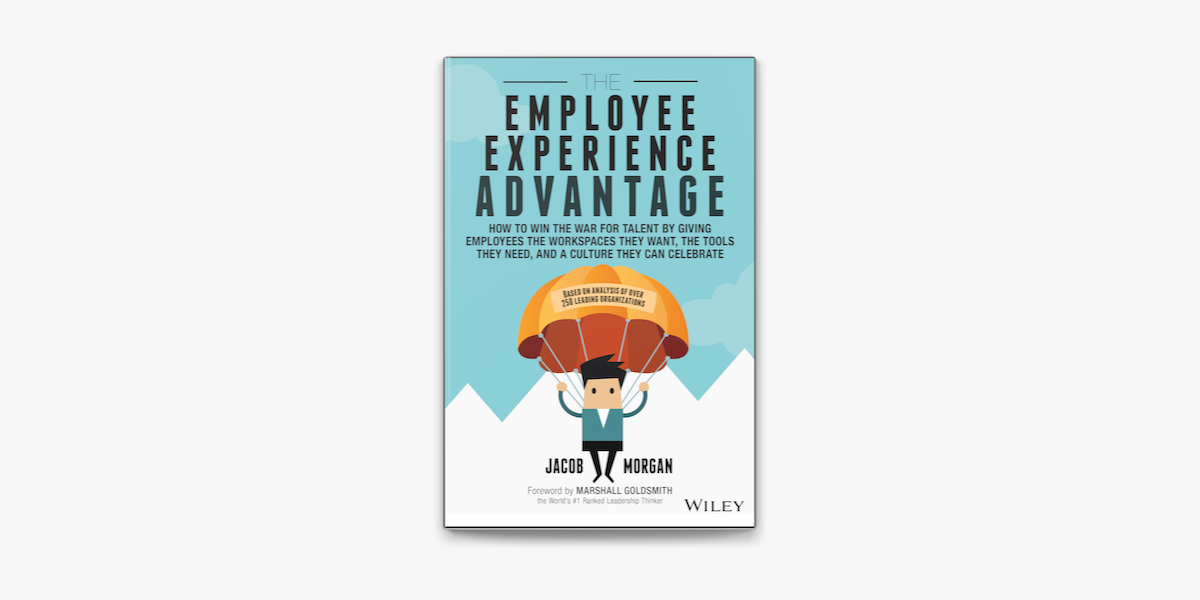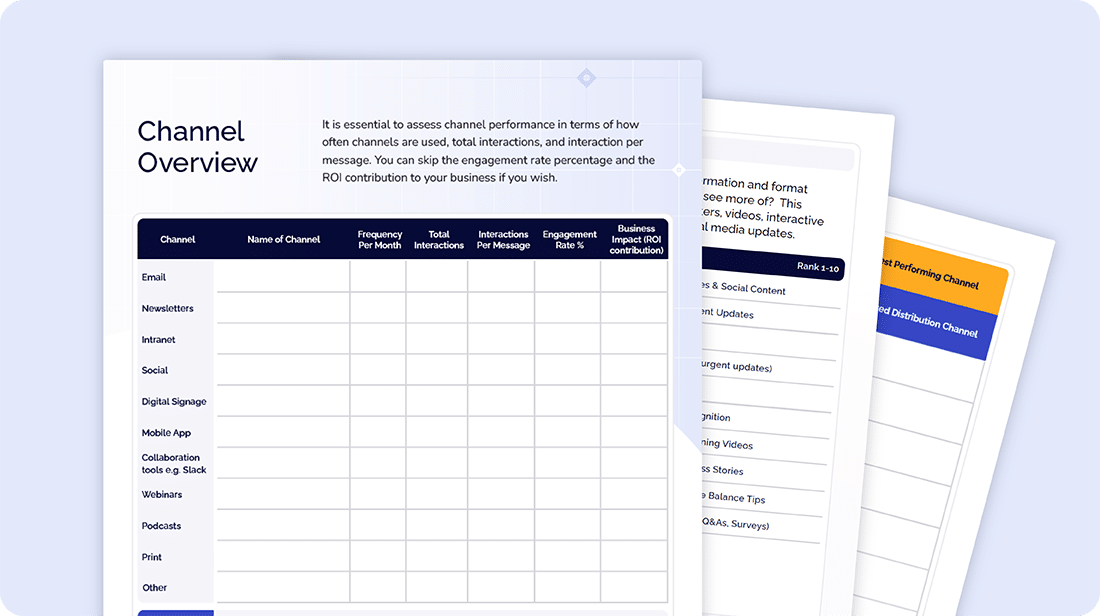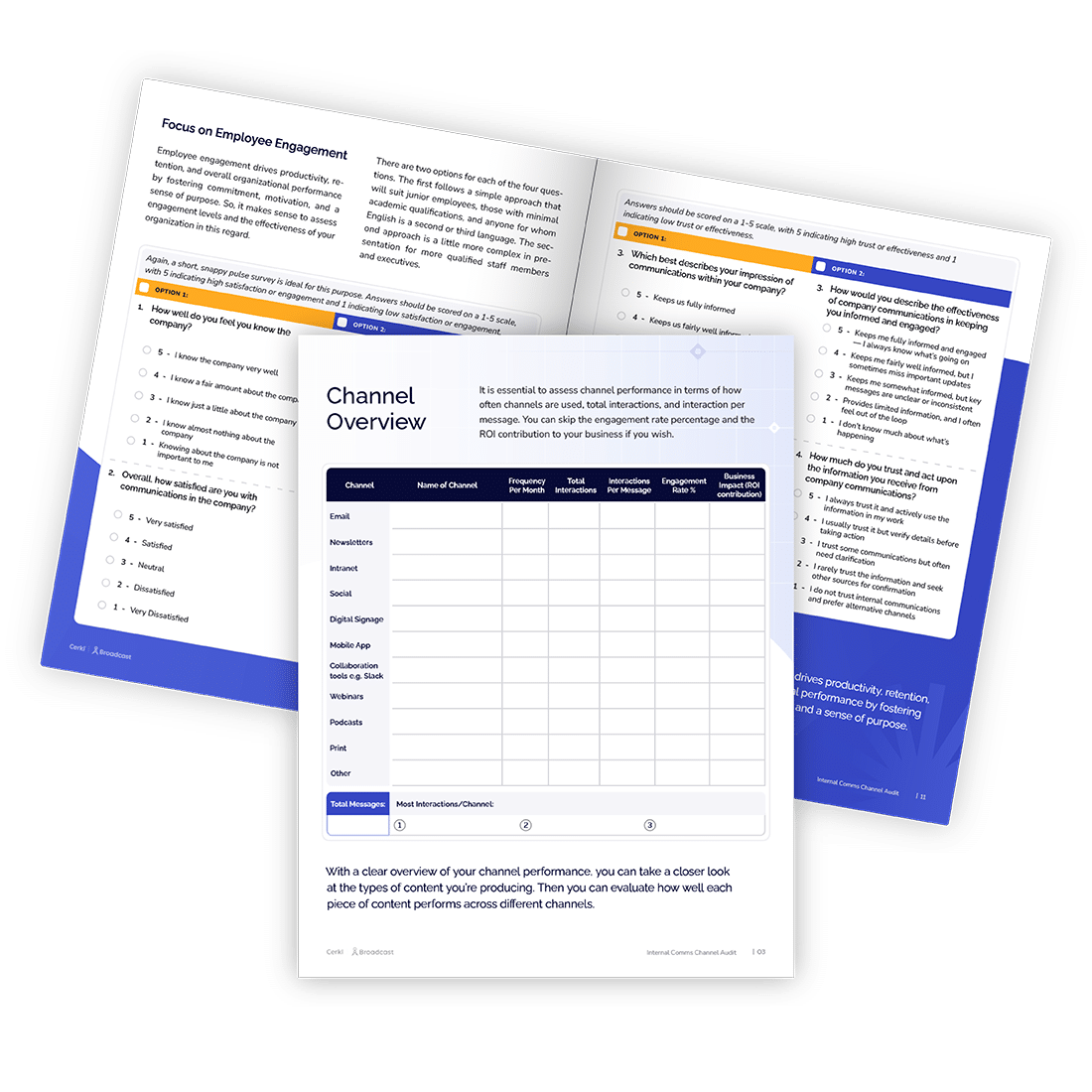Cerkl CEO Tarek Kamil reviews "The Employee Experience Advantage" and tells us why companies must adjust the traditional employee experience formula.

.png)
Strategy is an important component of internal communications. Ensure you’re communicating through the right channels at the right frequency with our Internal Communications Channel Audit worksheet.
Access NowA review of "The Employee Experience Advantage" and why the post-2020 virtual work environment means adjusting the traditional employee experience equation.
I love to read. In 2020 I read 34 books ranging from the thought-provoking ("Sapiens: A Brief History of Humankind") to the escape (hello, "Game of Thrones," I’m looking at you).
One of the books I read was particularly interesting as it ties directly to my role at Cerkl. During an employee communications conference, Kristina Vaneva recommended I read "The Employee Experience Advantage" by Jacob Morgan.
It begins by discussing the general concept of “employee engagement” and how it hasn’t been the panacea that everyone expected. I also talk about this topic in a prior post, “Employee Engagement is ^$#%!$#%.”
Instead of simply focusing on a hard-to-measure concept such as engagement, Morgan makes a research-backed case for employee experience.
The book shows research to quantify what truly creates a fantastic employee experience. It also outlines which companies are winning with the employee experience.

Morgan has worked with some of the world’s biggest companies such as Facebook, Cisco, Nike, Southwest Airlines. His research spans more than 250 companies in total. He was then able to distill employee experience into three distinct factors and roll those into an Employee Experience Index.
Upgrade your company’s internal comms to enhance employee communication

So what are the three factors that drive employee experience? Culture, technology, and physical space. In the book, Morgan does a great job of diving deeply into each and providing examples of companies that do each of these exceptionally well (and others that don’t).
While there are three parts to the equation, Morgan says they are not weighted the same. Culture carries the most weight, at approximately 60%, with physical space (23%), and technology (17%) getting us to 100%.
Notice that none of the components are click or open metrics, as we discuss in "Employee Engagement isn't Measured in Clicks."
Of course, this was all pre-COVID. What is the impact of COVID on this employee experience equation?
Even coming down from a high of 51% of employees working remotely due to COVID (source: Gallup), the vast majority of employers have return-to-work restrictions in place. A growing number of companies have announced that their employees may work remotely indefinitely (e.g., Twitter) or have more remote workdays.
More than 80% of US employers said the shift to remote work has been successful for their company, according to a late 2020 survey by PwC of 133 executives and 1,200 office workers. Looking at the post-pandemic era, over half of employees said they would prefer to work remotely at least three days a week.
So what happens to the Employee Experience equation when we remove the physical space?
Employee experience is now solely comprised of culture and technology. By removing physical space from the equation and readjusting the employee experience, culture increases from 60% to a whopping 78%. What's more, technology jumps from 17% to 22%.
Upgrade your company’s internal comms to enhance employee communication

When you remove the perks and benefits of physical space, COVID casts more attention on your company’s culture and technology. If your physical space was making up for a not-so-amazing culture, your employees will have much less reason to stay. Moreover, if a company had sub-par employee communications technology, the employee experience is under even more stress as in-person interactions are all but gone.
To rephrase, now’s the time to think through and invest in your organization’s culture and technology. Of course, I believe culture and tech have always been important for every company, but that’s for another blog post.
If your company plans to reduce your physical space requirements due to COVID, I would strongly recommend you think about how you can reallocate those funds. While your CFO may see an opportunity for cost savings, your CHRO will ultimately be the one that suffers as your culture and technology carry too much weight without additional investment.
There has never been a more critical time to think about investing in technology to bring a consumer-grade experience to your employees—not so subtle hint: that’s what we believe and built with our Broadcast product – even pre-COVID.
Want to know how successful businesses communicate with employees and enhance their employee experience? Get the audit they use for free, no risk, no commitment.

Upgrade your company’s internal comms to enhance employee communication
Want feedback? If you complete it, we will provide you with free, personalized advice on how to improve. Get started using your email.

Upgrade your company’s internal comms to enhance employee communication